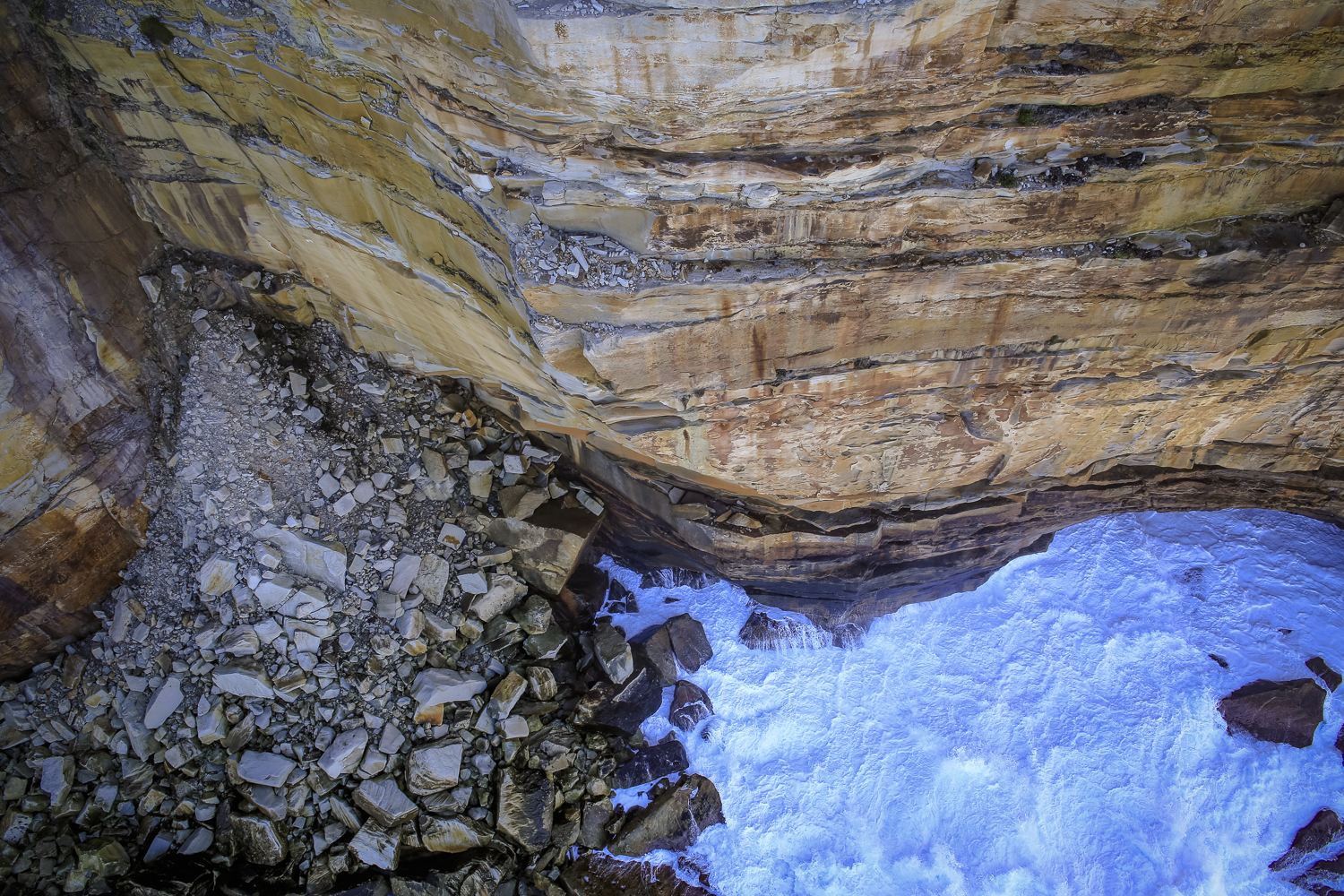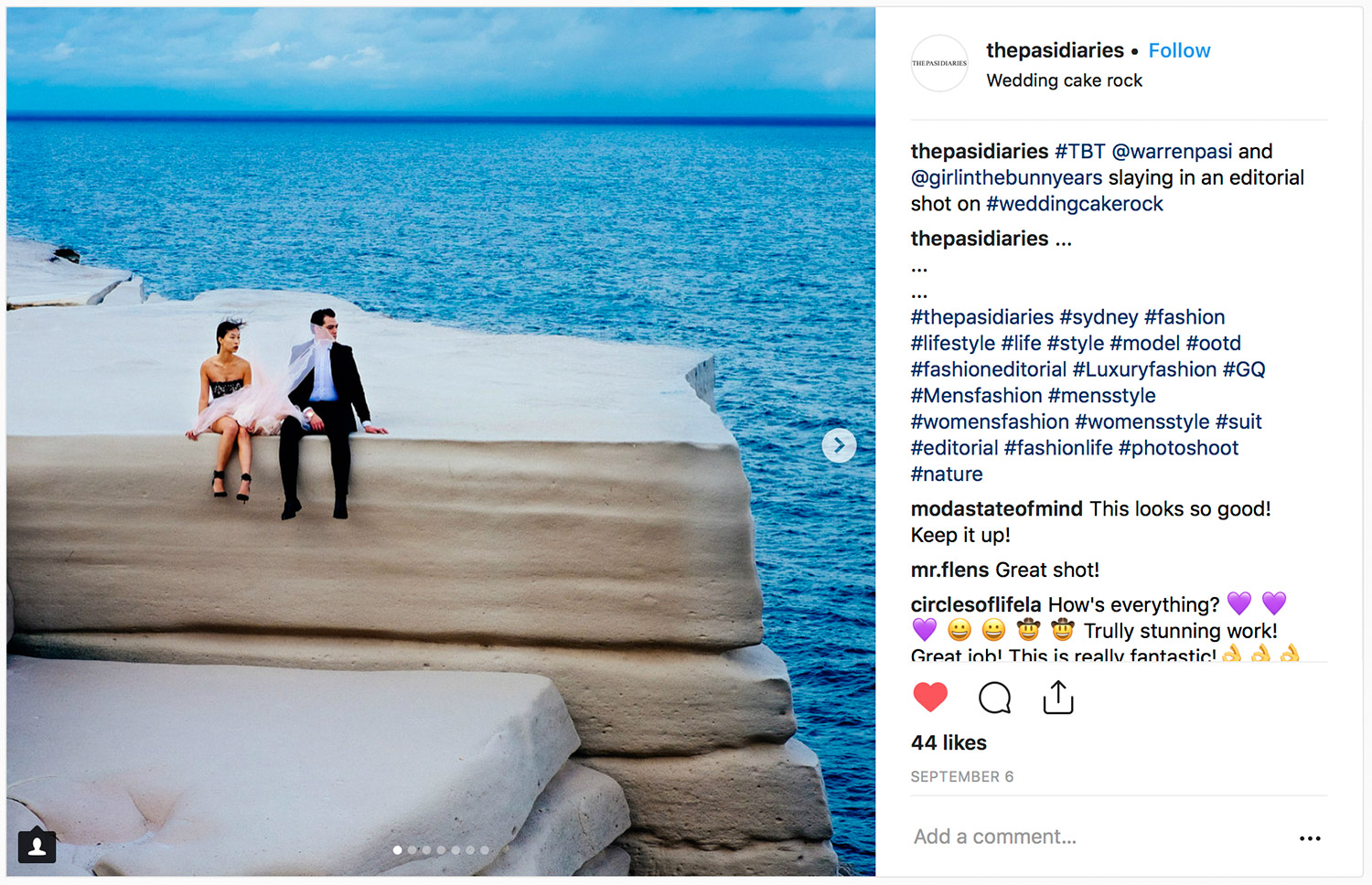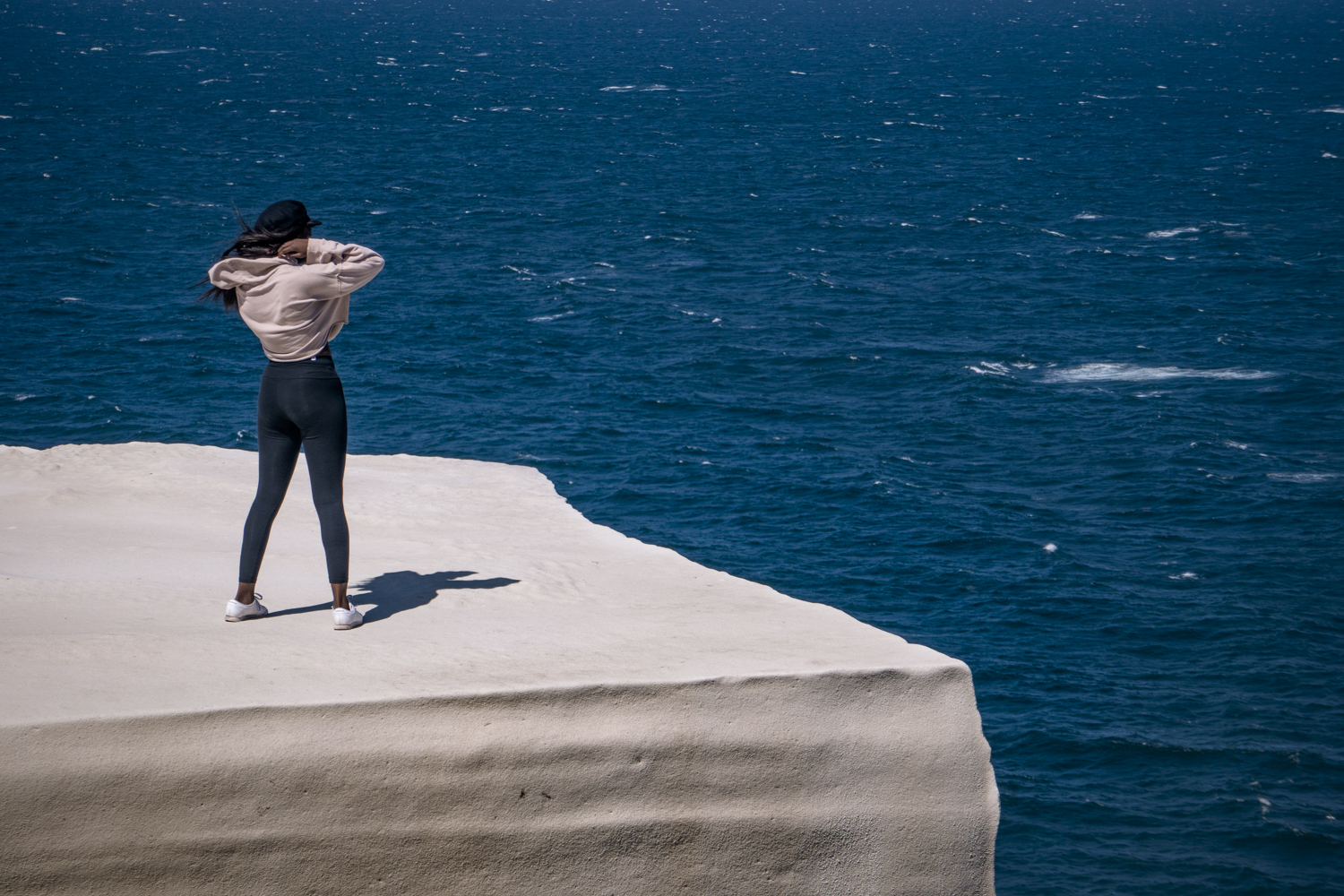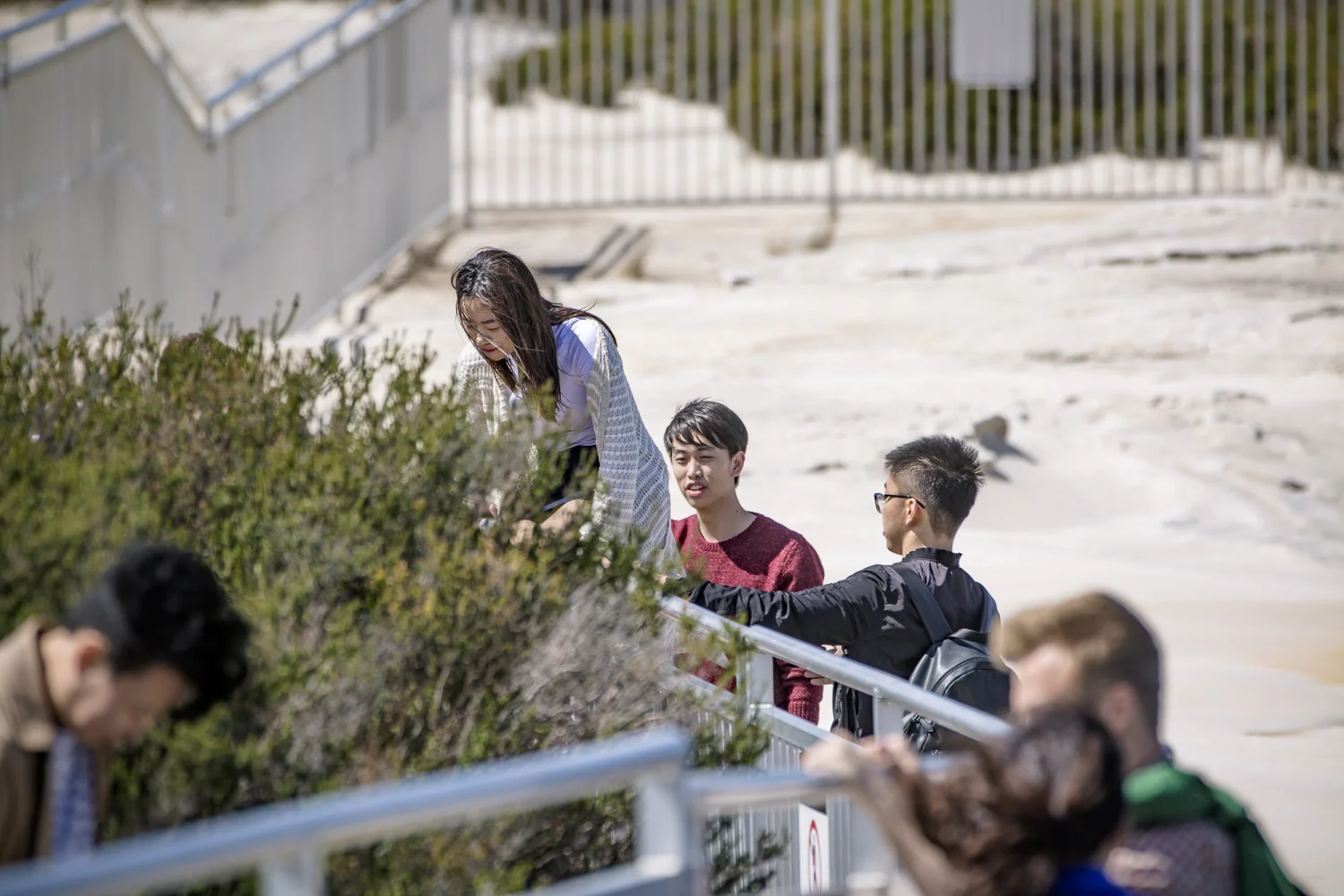About
A picturesque town within the Royal National Park, south of Sydney, Bundeena will mesmerise you with its pristine beaches, coastal walking tracks and breathtaking views of the South Pacific Ocean. If you’re feeling adventurous, you can hike the Coast Walking Track, a 26km trail featuring some of Australia’s most incredible coastal lookouts.
Recently, Bundeena has become known for one lookout in particular, at Wedding Cake Rock. But the rock formation is as fragile as it is popular with tourists, who ignore warnings and risk their lives for a photograph.
In 2015, the National Parks and Wildlife Service erected a 1.6m high fence around the unstable rock shelf, following a geotechnical survey that suggested it was highly unstable and could collapse without warning, within the next 10 years. In spite of this, each day hundreds of visitors, if not thousands, flock to the site and jump the fence for a selfie.
Instagram is flooded each day with an array of images on the rock, as if it was a competition to take a selfie or be the most creative. Warning signs and the threat of a $3,300 fine have not curbed the flow, leaving park rangers at a loss about how to stop the obsession. Already a few visitors have lost their lives chasing that elusive photograph.
OVERVIEW
A brief snapshot of the problem currently facing Wedding Cake Rock.
Click image to enlarge.
“More than 25,000 posts have been recorded using the hashtag #weddingcakerock in 2018”
the warning signs
Wedding Cake Rock - Video: Greg Tannos www.findmyaustralia.com
Thousands of people are risking their lives every year to get that extra special photo, despite the fact that this unique rock is on the verge of collapsing.
“In 2014, a French tourist fell to his death when a cliff crumbled beneath him.”
“Wedding Cake Rock is unstable and has a fence around it for your safety, but we encourage people to come and look at the spectacular rock formations and take photos and enjoy the views from a safe distance.”
“You would think the massive warning signs would be enough of a deterrent.”
The Real Impact
Signage is located all around the site and a 1.6m fence stands between visitors and the famous white rock, which resembles a slice of wedding cake. Yet visitors continue to climb the fence and risk it all for a photograph.
Click images for captions and larger images (Lightbox).
“Do we need to educate people regarding certain risky behaviours and risky places where selfies should not be taken?”
“I understand the risk, but when everyone else is doing it, I suppose I think it’s okay.It’s not like it’s going to collapse while i’m on it, so why not get the shot? Then I’ve got the picture to prove it.”
Hung Sun Lee
Summary
Bundeena and Wedding Cake Rock are being overwhelmed by selfie-taking photographers who ignore the warning signs around an iconic landmark on the verge of collapse. Having been given a life span of only 10 years, the rock sits precariously at the edge of the cliff. Rangers of the Royal National Park have been left with little choice but to call for assistance from the NSW Police to help enforce trespassing rules in an effort to prevent another fatal tragedy.
Following the death of a French tourist in 2014 when part of the cliff collapsed beneath him, a 2015 geotechnical report suggested the rock could collapse at any time "without warning" into the sea 50 metres below. Since 2014 several incidents have been reported at Wedding Cake Rock, including a fatality in the last six months and the rescue of two men from a ledge when a section gave way.
Despite the warnings, images of people standing on the rock still appear regularly on Instagram, under the hashtag #weddingcakerock. So how can we prevent another disaster?
IN The Media
“NPWS warns Wedding Cake Rock could collapse without warning”
Illawarra Mercury - July 17, 2018

























































